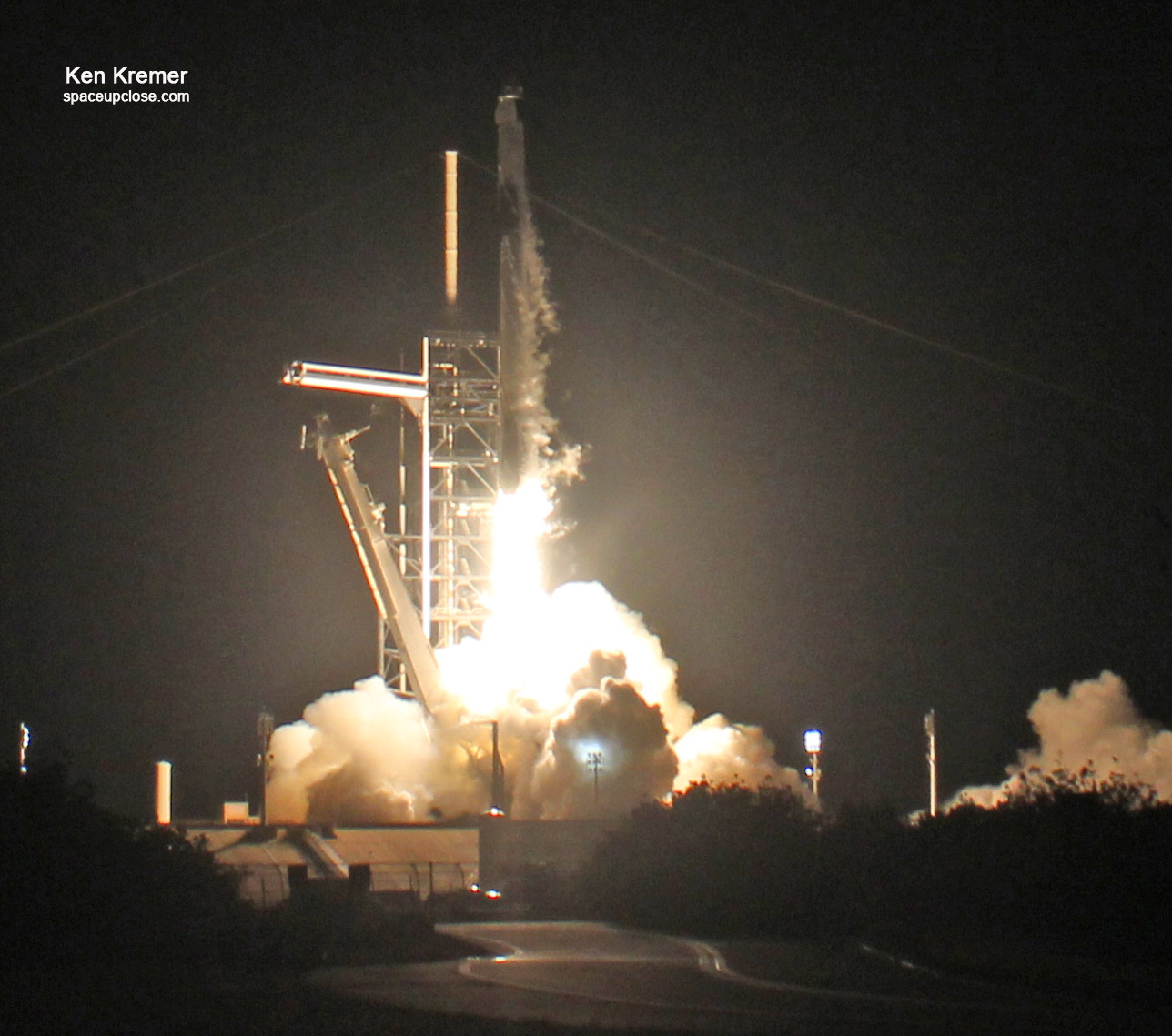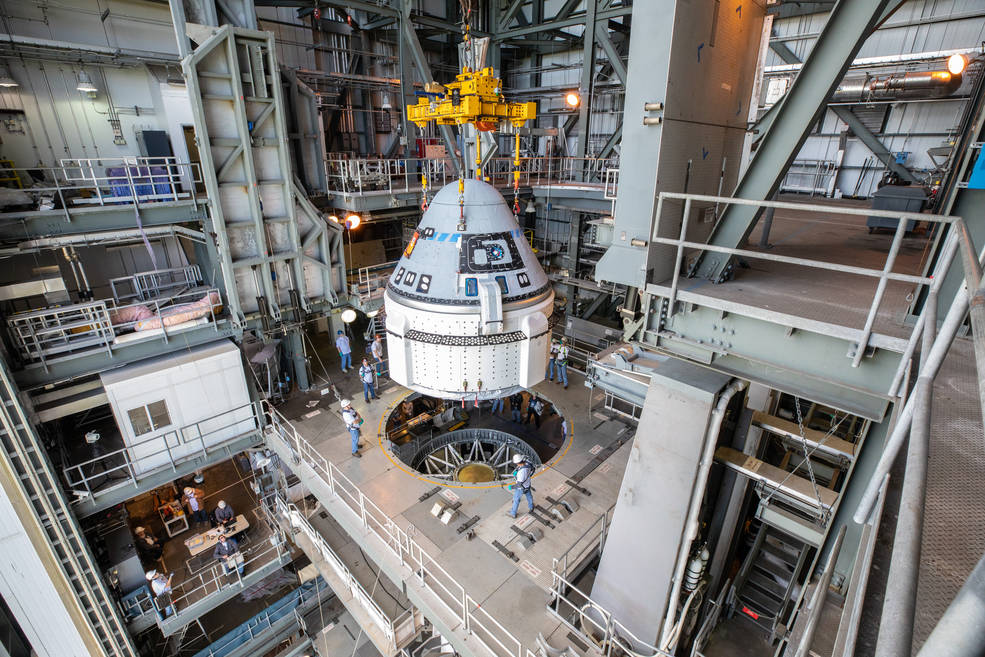
For SpaceUpClose.com & RocketSTEM
KENNEDY SPACE CENTER, FL– Boeings first flightworthy Starliner astronaut capsule was hoisted atop and joined to the United Launch Alliance (ULA) Atlas V rocket that will propel it to space on its maiden mission from Cape Canaveral to the International Space Station on the company’s uncrewed Orbital Flight Test (OFT) for NASA in just over 3 week in mid-December – just hours after a momentous and celebratory rollout from the firms spacecraft manufacturing facility before sunrise Thusday, Nov 21 at NASA’s Kennedy Space Center (KSC), Florida.
Starliner’s attachment to the ULA Atlas V marks a significant milestone in the dawn of a new era in commercial human American spaceflight that will soon lead at last to the long awaited resumption of human spaceflight launches of American astronauts on American capsules and rockets from American soil – thereby ending our 100% reliance on the Russian Soyuz capsule since the forced end to NASA’s space shuttle program in 2011 by shortsighted American politicians.
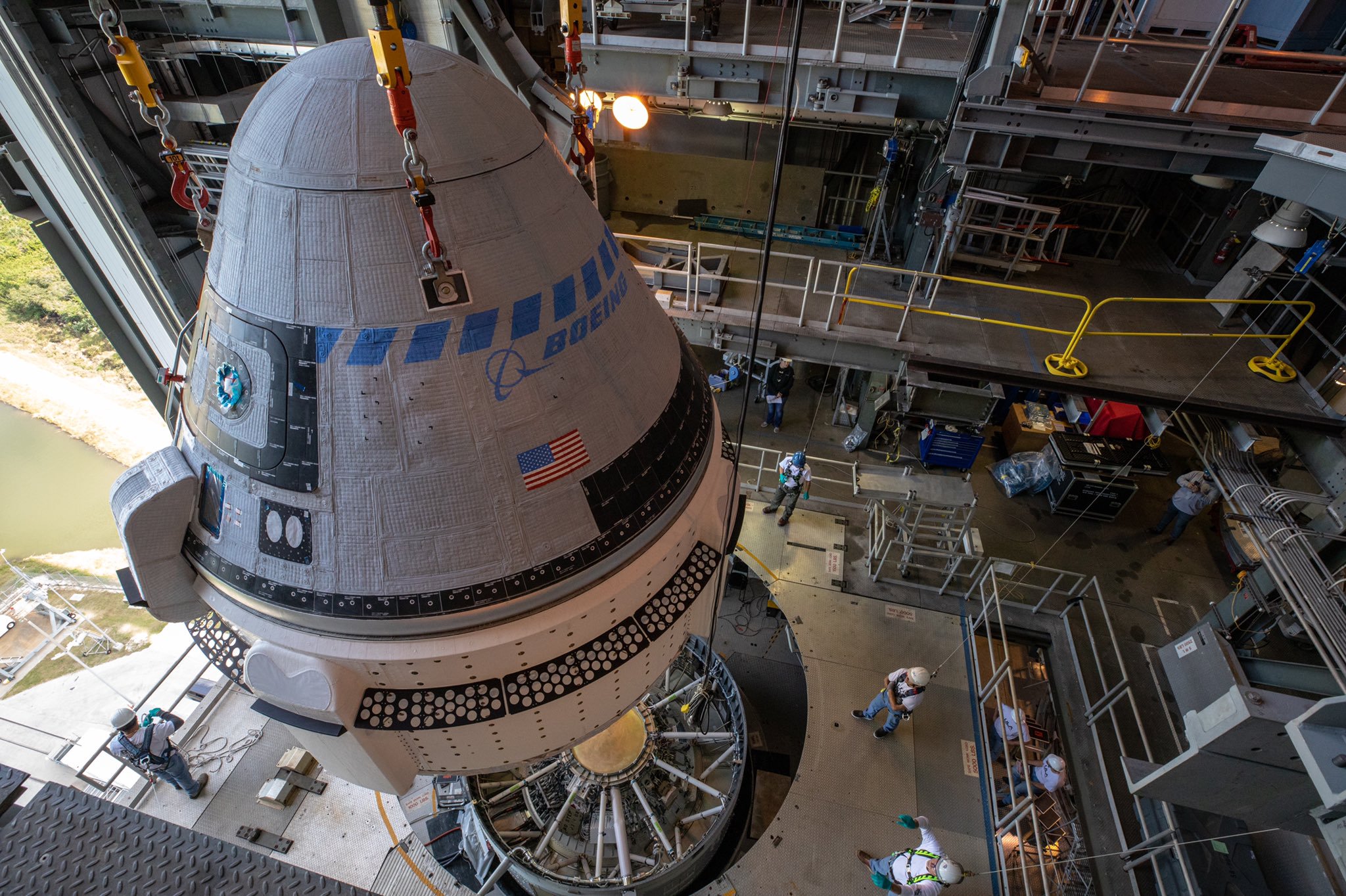
Starliner, and the competing Crew Dragon spacecraft from SpaceX, were both developed with funding under NASA’s Commercial Crew Program (CCP) started nearly a decade ago.
So its been a very long haul to reach this point on the verge of blastoff.
The goal of the Commercial Crew Program is to end our 100% reliance on the Russian Soyuz capsule for launches to the ISS at a cost of more than $85 million per astronaut seat.
Moving at a top speed of 5 mph ULA’s motorized KAMAG payload transporter with Starliner carefully cradled on the deck drove out from Boeing’s Commercial Crew and Cargo Processing Facility (C3PF) around 6 a.m. EST (1100 GMT) at NASA KSC Thursday, Nov. 21, led by members of the Boeing team holding a banner that read “We’re All In! Go Starliner!”
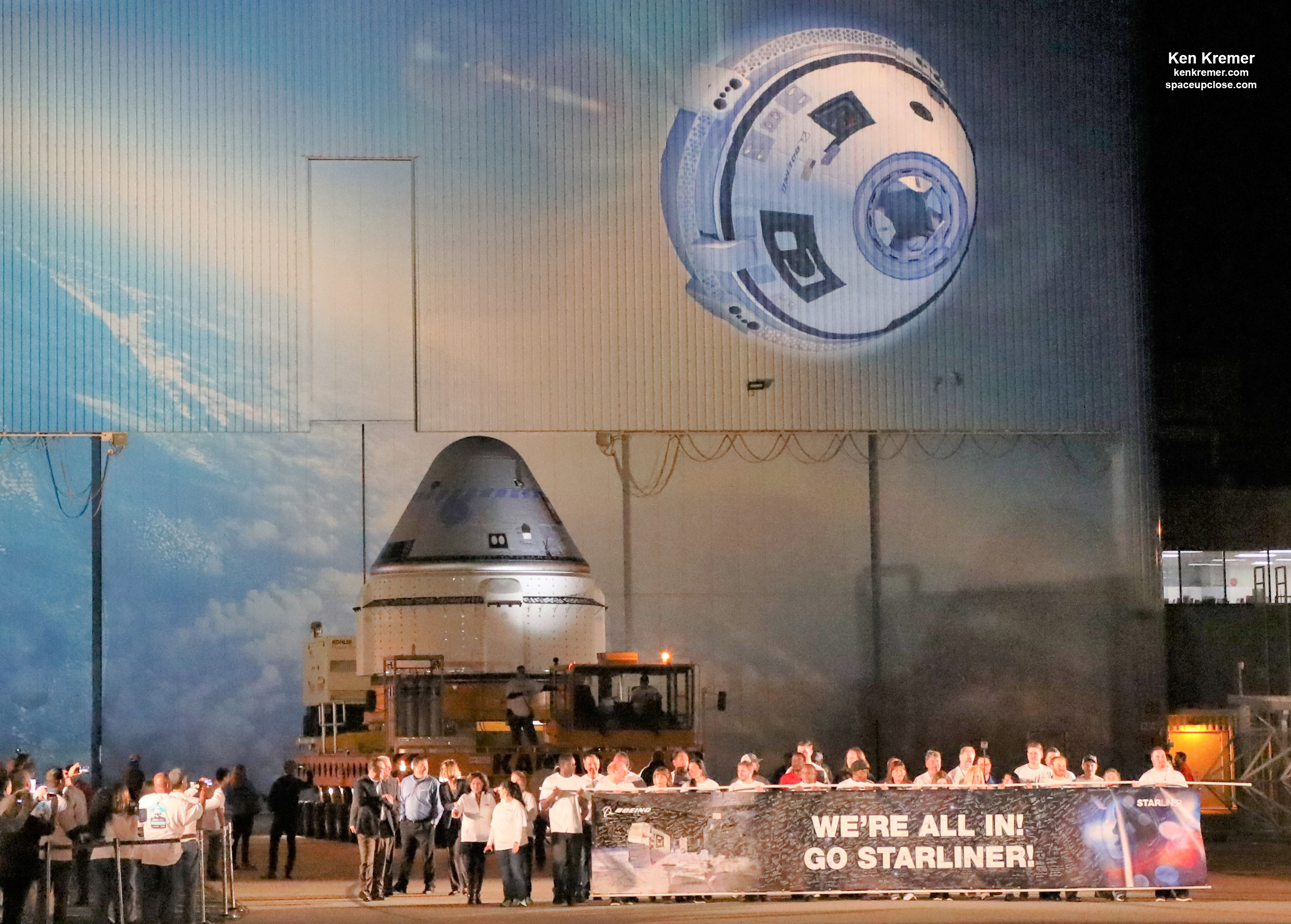
ULA’s KAMAG transporter was specially modified to hold Starliner and headed eastward to the beach and then southward toward to ULA’s Vertical Integration Facility (VIF) for hoisting atop the waiting Atlas V at its launch site at Space Launch Complex-41 on Cape Canaveral Air Force Station after departing Boeing’s C3PF manufacturing facility. See NASA and ULA photos herein.
Along the way on a trek of a few miles to pad 41 the 16.5-foot-tall (5-meter) Starliner was carefully maintained under environmentally controlled conditions with the In-Transport Payload Air Conditioning (ITPAC) on the KAMAG deck.
The Starliner rollout was greeted by a cheering crowd of workers, employees, astronauts, NASA and Boeing officials and family and media in the shadow of the iconic Vehicle Assembly Building (VAB) – all hungry for success and a restoration of US astronaut launches after years of development efforts and delays.
Space UpClose was on hand for the Starliner rollout from the C3PF. Enjoy our report and eyewitness photos.
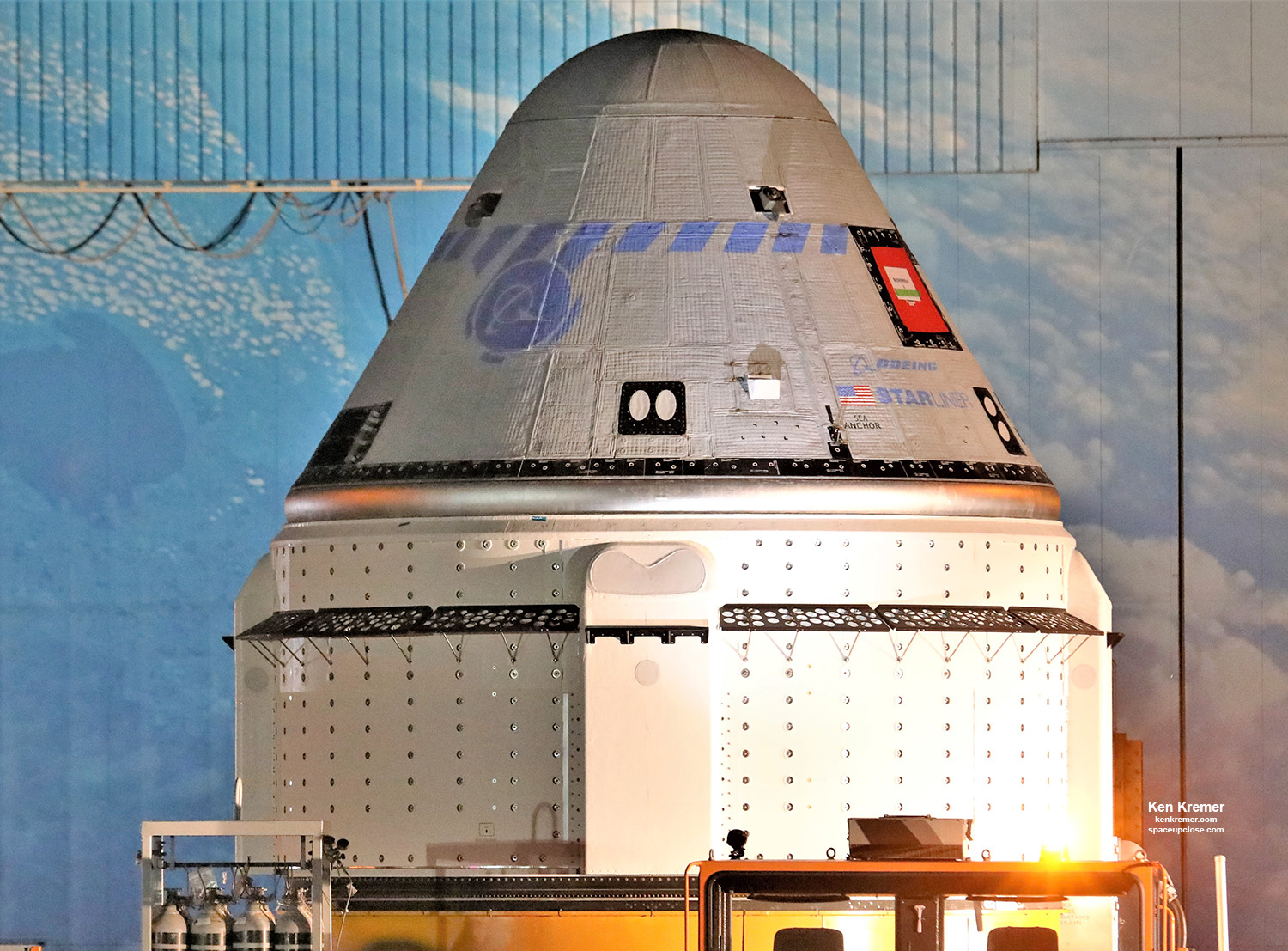
Starliner arrived at the VIF a few hours later on Friday and was hoisted atop and mated to the Atlas V rockets upper stage on the Launch Vehicle Adapter (LVA) by the combined ULA, Boeing and NASA team.
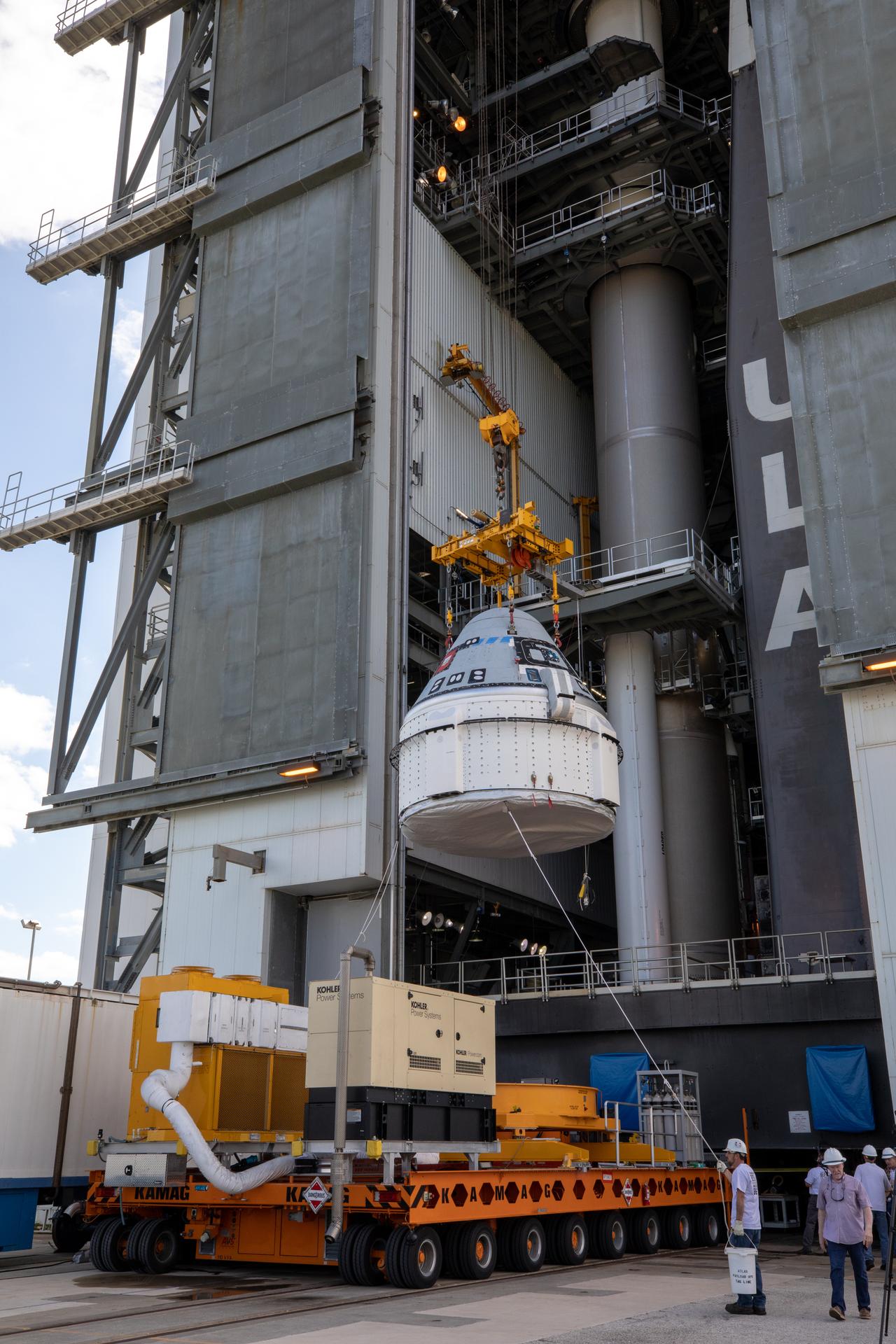
“Approaching the VIF, the KAMAG maneuvered up to the 30-story-tall building’s doorway and parked,” ULA wrote in a blog post.
“A four-point lifting sling, called the Handling Fixture Hoist Tool (HFHT), was connected to the Starliner for the overhead crane to carefully raise the capsule onto the Atlas V waiting inside the VIF aboard its Mobile Launch Platform (MLP).”
“Starliner was positioned for mating to the Launch Vehicle Adapter (LVA) that serves as the spacecraft’s cradle atop the rocket during ascent. The LVA also features the aeroskirt structure that smooths the air over the combined payload and Atlas V for aerodynamic stability.”
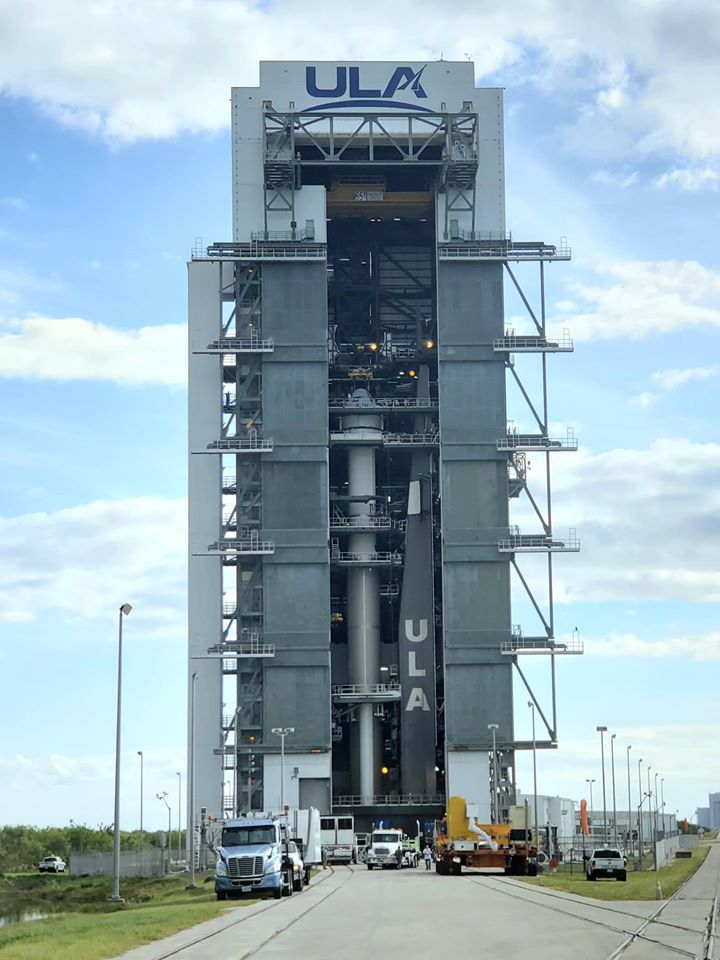
Boeing officials confirmed the Atlas V mating operation went well.
“Our team successfully completed the transport and mating of two incredible vehicles,” said Boeing Starliner Vice President John Mulholland, in a statement.
“Safety and mission success come down to ensuring the integrity of every step along the way. I could not be more proud of the Starliner team and the dedication put forward to get here today.”
The United Launch Alliance Atlas V rocket will launch Starliner to low Earth orbit (LEO) and docking at the ISS on its first test flight on the OFT mission to the ISS.
Liftoff of the uncrewed OFT flight test is targeted to launch to No Earlier Than (NET) Dec. 17 at 7:47 a.m. EST (1247 GMT).
OFT “will provide valuable data on the end-to-end performance of the Atlas V rocket, Starliner spacecraft and ground systems, as well as in-orbit, docking and landing operations.”
If all goes well with the week-long OFT mission it will fully demonstrate Starliner and Atlas V’s ability to safely carry crew to and from the orbiting laboratory and pave the path to the inaugural crewed liftoff on the Crew Flight Test (CFT) mission launching as soon as early 2020.
The first Starliner crew on the CFT mission comprises a trio of NASA and Boeing astronauts – who were also was on hand to welcome the Starliner on this milestone achievement and thank the tremendously hard working efforts of the entire team – namely Boeing astronaut and former NASA astronaut Chris Ferguson and NASA astronauts Mike Fincke and Nicole Mann.
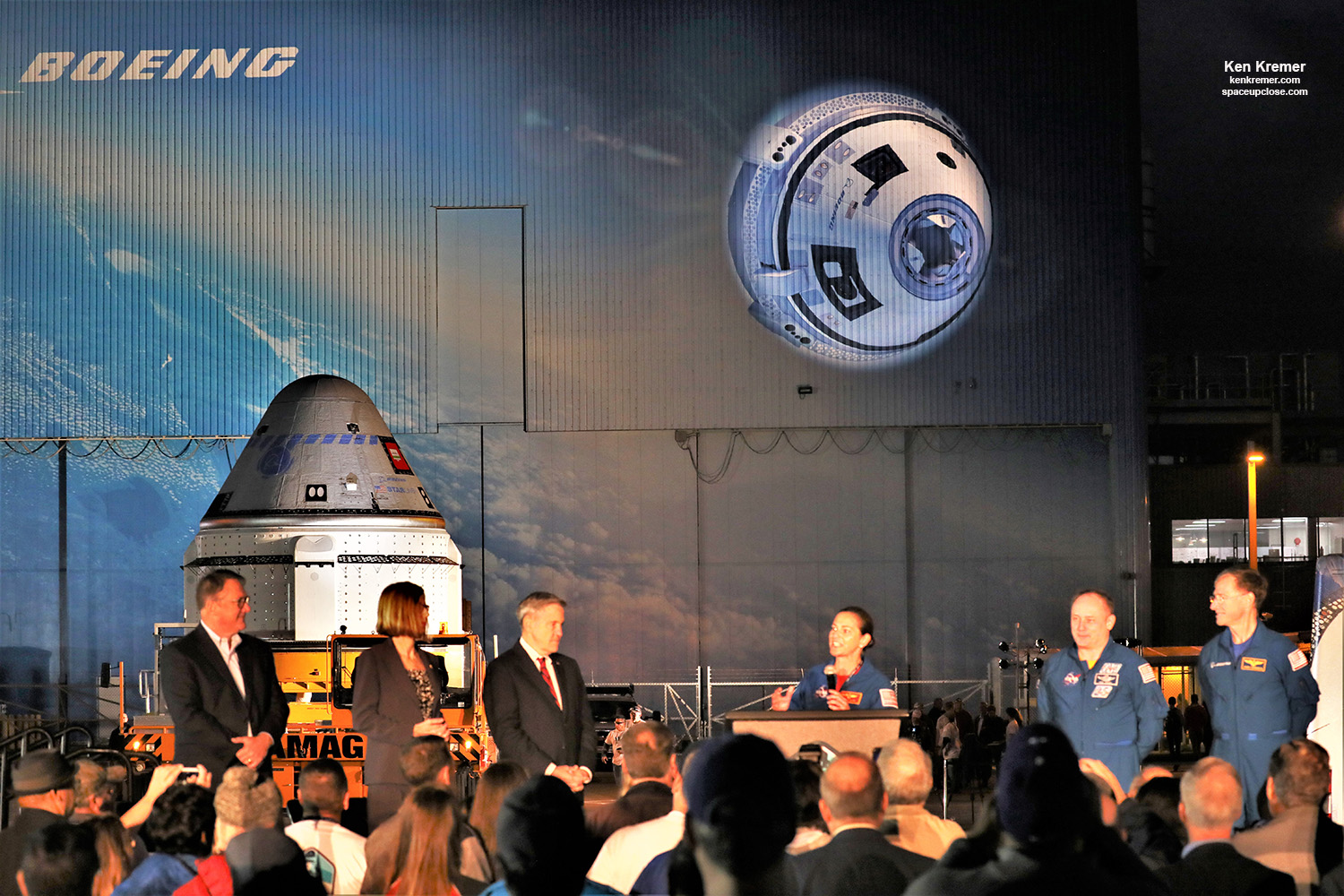
Ferguson commanded the final shuttle mission STS-135 in July 2011.
He has been working on Starliner development and manufacturing ever since as a manager on the Boeing team and as a private Boeing test pilot astronaut.
“This is the dawn of a new era,” said Ferguson at Friday mornings’ pre-dawn rollout. “For all of you youngsters out there who came out here early to watch, I’m glad you were a part of this. This is really important because this is your future, too.”
The Atlas V rocket that will carry Starliner comprises a ULA built 1st stage booster powered by Russian-made RD-180 engines, a dual-engine Centaur upper stage, as well as a pair of strap on first stage solid rocket boosters.
This marks a new configuration for the Atlas V designated as “N22” because these is no payload fairing surrounding the Starliner and includes the dual engine Centuar upper stage with two RL-10 engines and two strap on boosters.
With Starliner the completely rocket stack stands 172 feet (52.4 meters) tall.
The Atlas rocket generates about 1.6 million pounds of liftoff thrust at launch and enjoys a 100% success record since 2002.
Starliner is being manufactured in Boeing’s refurbished and repurposed Commercial Crew and Cargo Processing Facility (C3PF) – a cavernous hanger previously used to process NASA space shuttles for 3 decades at the Kennedy Space Center nearby the Vehicle Assembly Building.
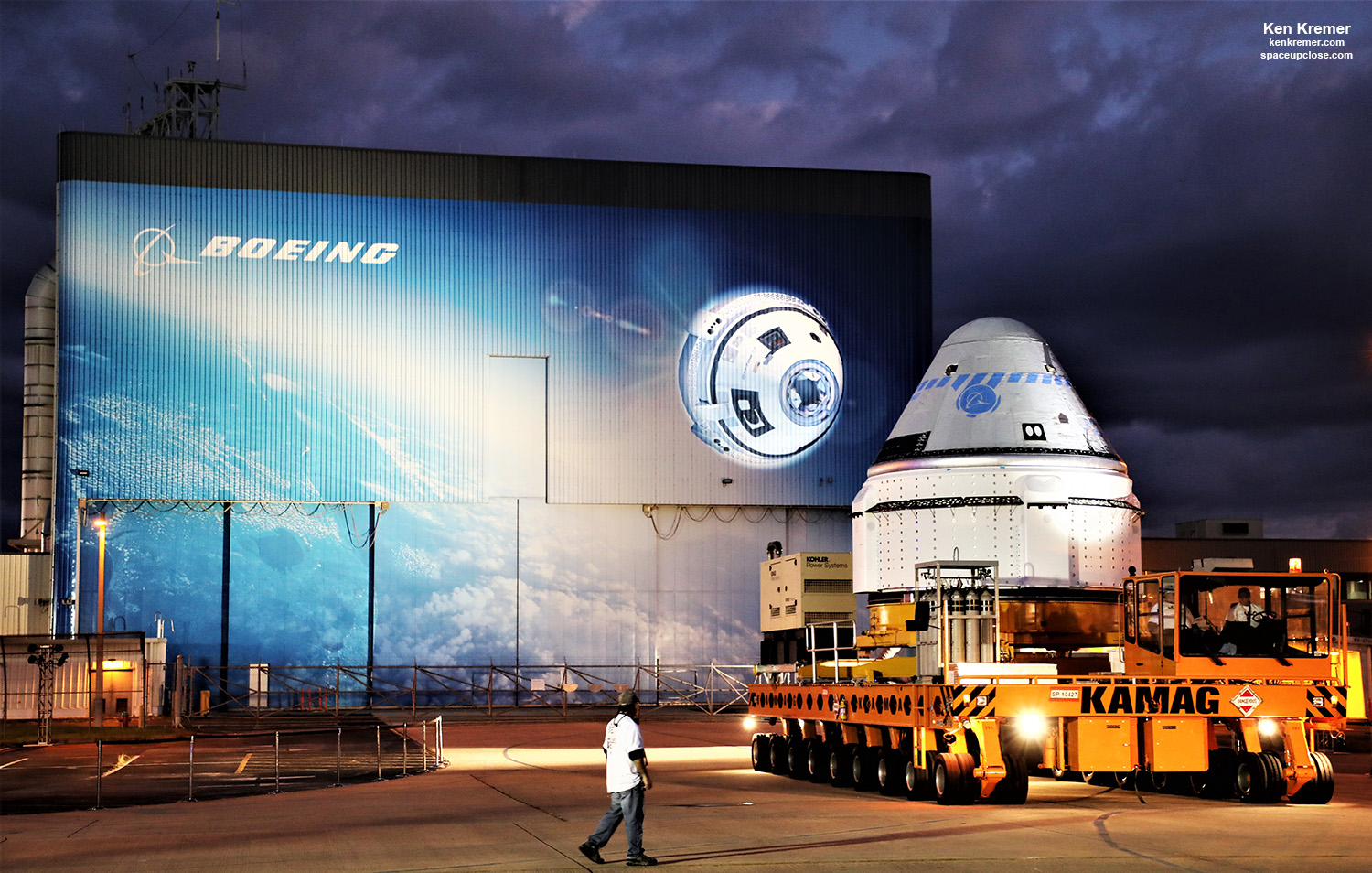
The Boeing Starliner CST-100 and SpaceX Crew Dragon and human spacecraft are currently development under NASA’s $6.8 Billion Commercial Crew Program (CCP) -with the goal to once again ferry American astronauts to the International Space Station (ISS) from American soil on American rockets to end our sole reliance on the Russian Soyuz crew capsule for the first time since the forced shutdown of NASA’s space shuttles in 2011.
Boeing was awarded a $4.2 Billion contract while SpaceX was awarded a $2.6 Billion contract by NASA in 2014.
Since then both companies have received additional funds
Earlier this month on Nov. 4 Boeing completed the critical emergency Pad Abort Test to demonstrate the spacecraft’s ability to quickly separate from the rocket and escape the launch pad and save the astronauts lives in a split second in the event of a catastrophic rocket emergency on the launch pad on launch day.
Watch my commentary on WFTV ABC TV News 9 Orlando on Nov. 15, 2019 about the NASA Inspector General report warning about further delays to launching Commercial Crew capsules from Boeing and SpaceX to the ISS and the imperative to begin launches soon before NASA’s last contract for Soyuz seats expires:
https://www.wftv.com/news/florida/nasa-audit-warns-of-safety-risks-in-delayed-private-crew-launches/1009107861
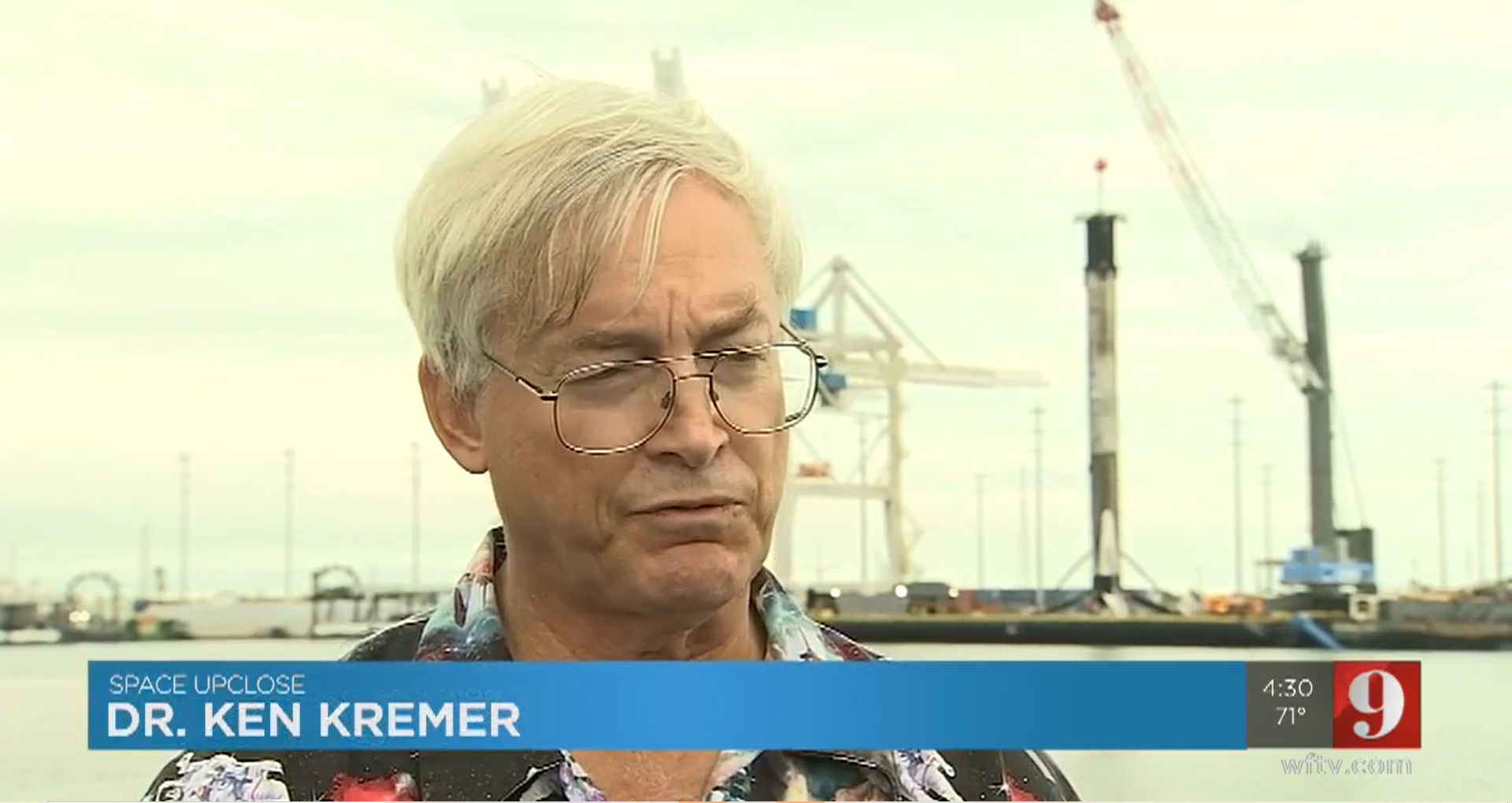
Watch my commentary at Fox 35 TV News Orlando on Nov. 4, 2019 about the outcome of the Boeing Starliner Pad Abort Test:
https://www.fox35orlando.com/news/boeing-capsule-abort-test-successful-despite-third-parachute-gaffe
Stay tuned here for Ken’s continuing Earth and Planetary science and human spaceflight news: www.kenkremer.com –www.spaceupclose.com – twitter @ken_kremer – email: ken at kenkremer.com
Dr. Kremer is a research scientist and journalist based in the KSC area, active in outreach and interviewed regularly on TV and radio about space topics.
………….
Ken’s photos are for sale and he is available for lectures and outreach events
Ken’s upcoming outreach events:
Nov 23, 1 PM, Titusville, FL: “50th Anniversary Apollo 12 and NASA’s Human Return to the Moon with Project Artemis” at American Space Museum, Titusville, FL. Lecture free. Open to the public. Photos for sale
Website: www.spacewalkoffame.org
www.spacewalkoffame.org/event/cosmic-christmas-yard-sale-and-apollo12-50th
Dec 3/4: 7 PM, Quality Inn Kennedy Space Center, Titusville, FL. “SpaceX CRS-19 Launch to ISS Dec 4.” Free. In hotel lobby. Photos for sale



